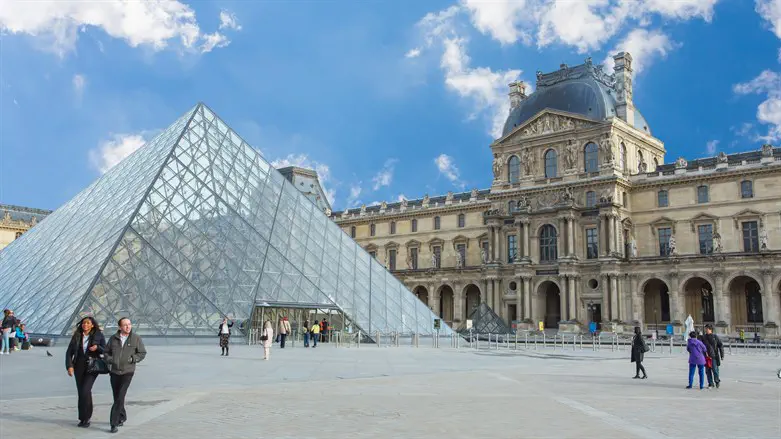
Two paintings and two drawings looted by the Nazis in France from a private art collection have been restituted to heirs of an Egyptian Jewish businessman who lived in France.
The two watercolor paintings and two drawings are by 19th century French artists Paul Delaroche, Auguste Hesse, Jules-Jacques Veyrassat and Georges Michel, the French Ministry of Culture said in a statement.
The paintings, along with hundreds of other pieces of art in the collection, were looted by the Nazis in November 1940 from the home of Moise Levi de Benzion.
Benzion passed away in France three years later, while World War II was still ongoing.
After the war, two Paris museums, the Louvre and the Musée d’Orsay, took possession of the pieces, while the legal owners were searched for. According to the ministry, the process took until 2018 when ex-French Prime Minister Edouard Philippe created a task fore to track down the rightful heirs of looted artwork.
Roselyne Bachelot-Narquin, the French Minister of Culture, said she was delighted with the restitution, which took place on December 22. The process was a joint endeavor of the Ministry of Culture, the Louvre, the Musée d’Orsay, the Archives Directorate of the Ministry for Europe and Foreign Affairs, and the Commission for the Compensation of Victims of Spoliation Resulting From Anti-Semitic Legislation in Force During the Occupation (CIVS).
“Registered in the inventory of ‘artistic recovery,’ these works were part of the so-called ‘National Museums Recovery’ (MNR), generically designating the remainder of the works found in Germany at the end of the Second World War and brought back to France,” the Ministry of Culture said. “Those which had not been returned or sold were, in the early 1950s, entrusted to the custody of national museums, pending, in the event of proven spoliation, their return to their legitimate owners or their beneficiaries. Many of these MNR works were stolen from Jews.”
They explained about the restitution process for the four works of art belonging to Benzion that “this restitution was made possible by the proactive approach carried out by the state services and consisting, without waiting for the rights holders to come forward, to identify the owner of the MNR works at the time of their spoliation, then his current beneficiaries.”
